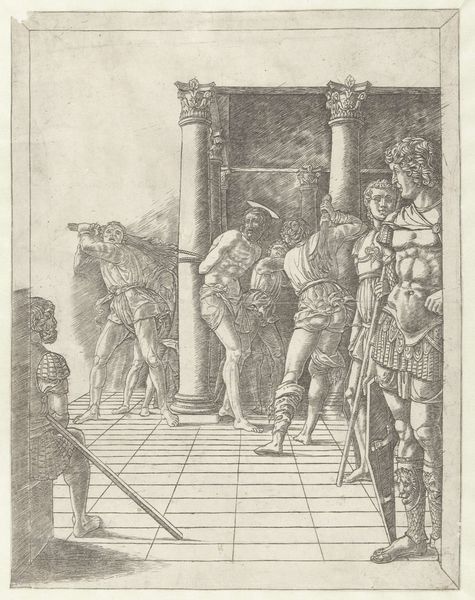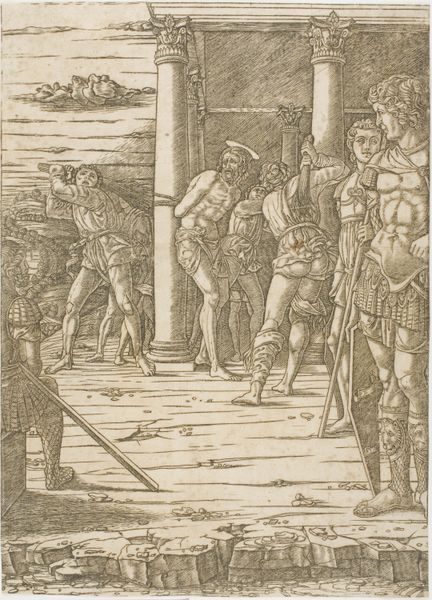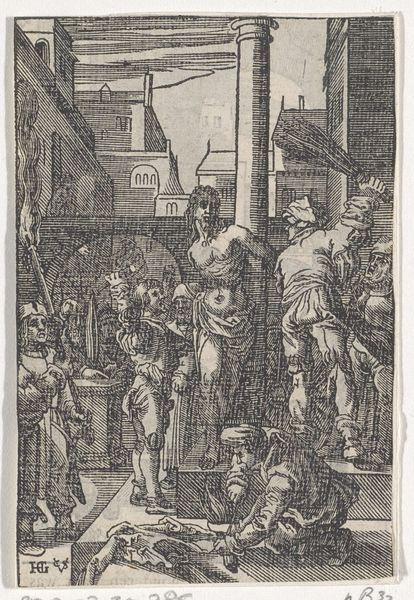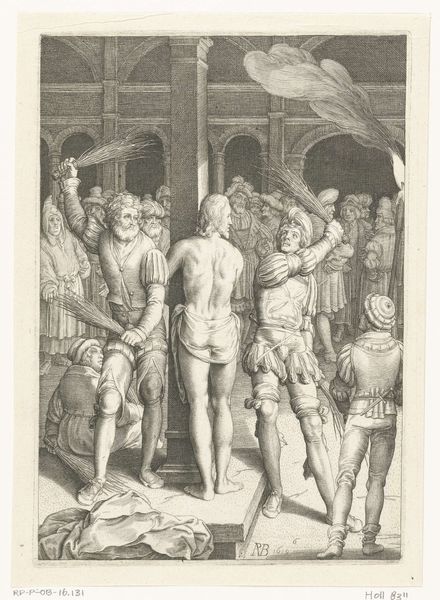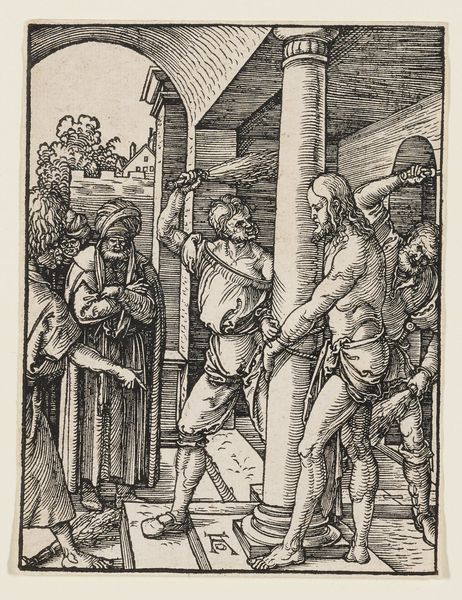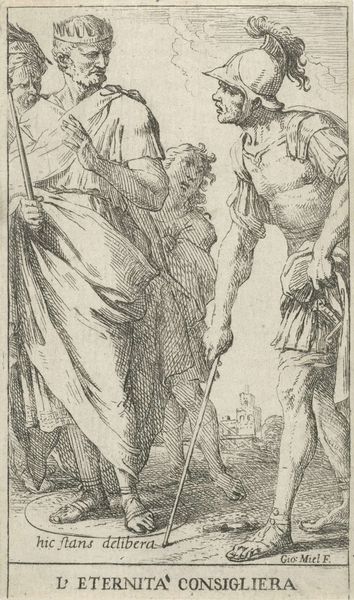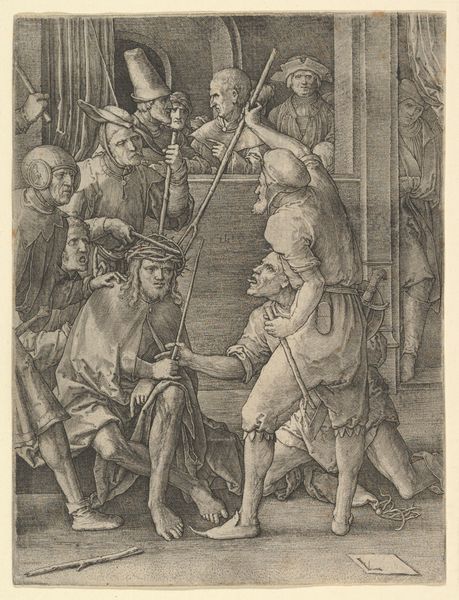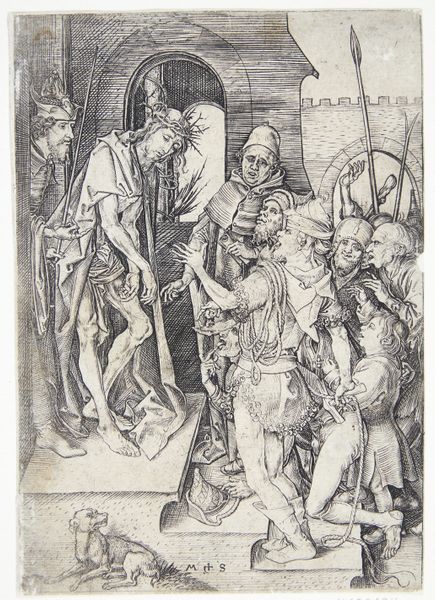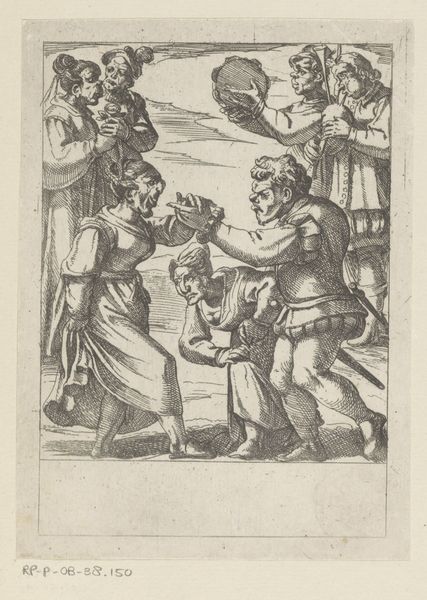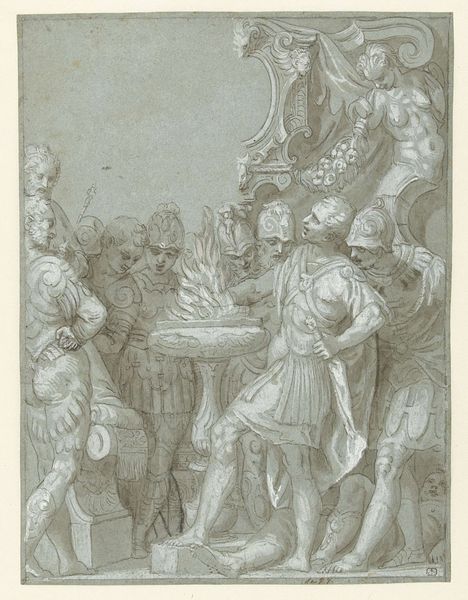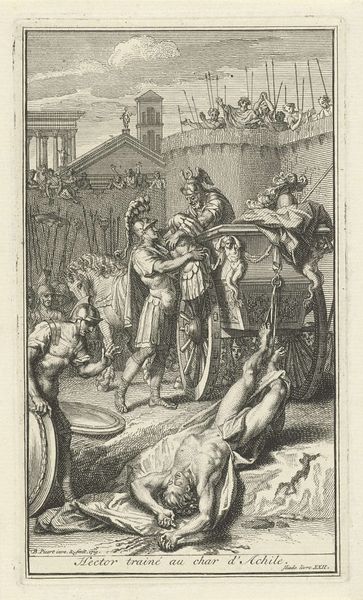
print, engraving
#
narrative-art
# print
#
perspective
#
figuration
#
history-painting
#
italian-renaissance
#
engraving
Dimensions: height 353 mm, width 284 mm
Copyright: Rijks Museum: Open Domain
Curator: Looking at Andrea Mantegna’s "The Flagellation of Christ," an engraving made around 1475-1480, I'm struck by its somber intensity, almost theatrical staging, isn’t it? Editor: Indeed. The scene certainly overwhelms. Its oppressive atmosphere comes to the fore immediately. The artist's emphasis on line creates a palpable sense of harshness. What are your thoughts on how the architectural context shapes the overall composition? Curator: The cold, almost sterile architectural space feels utterly detached from the brutality unfolding within it, adding a chilling layer of indifference. Those rigid, linear patterns in the floor create this undeniable sense of claustrophobia and entrapment. What’s fascinating to me is how the figures inhabit that stage – especially the figure of Christ tied to that column, positioned centrally like the tragic protagonist of the scene. Editor: The artist masterfully uses perspective to enhance the drama. Think about the vantage point: we, as viewers, are almost forced into the role of voyeurs. This reflects the societal dynamics of the Renaissance where public shaming was common; the flagellation becomes a political theatre, with the public positioned to witness and implicitly endorse the violence. Curator: I’m also intrigued by the engraving technique, it provides a visual narrative almost biblical. Every cross-hatched line adds depth and shadow, enhancing the physicality of the figures, the straining muscles, and even Christ's suffering. This painstaking process reinforces the severity of the subject, a calculated execution in both form and content. Editor: Absolutely, but I would stress how the socio-political underpinnings also provide an important context. Art was often commissioned by patrons to serve a didactic purpose, to remind citizens of moral codes and the consequences of transgression. This piece reflects how the artist contributed to the cultural ideology of the time. Curator: So we agree that this composition’s artistry and historical relevance offers insight into humanity itself, regardless of epoch. Editor: Precisely. Considering both Mantegna's compositional rigor and the context within the society from which it emerged only enriches the work's layered meaning.
Comments
No comments
Be the first to comment and join the conversation on the ultimate creative platform.
